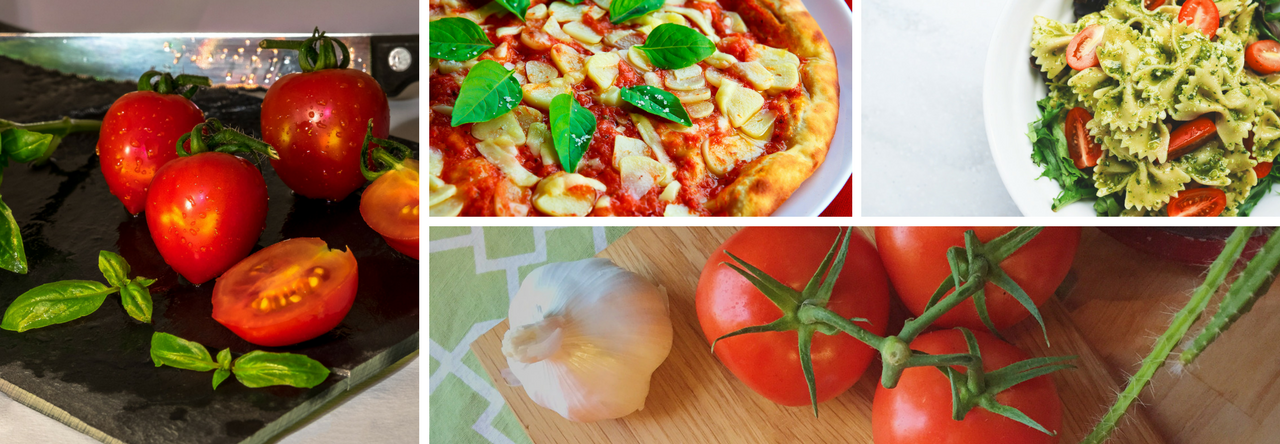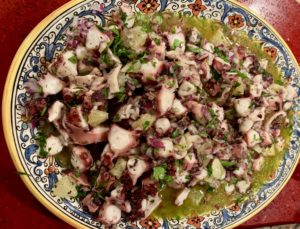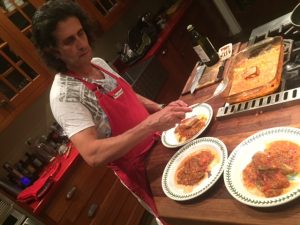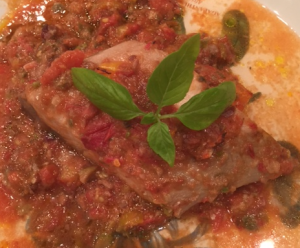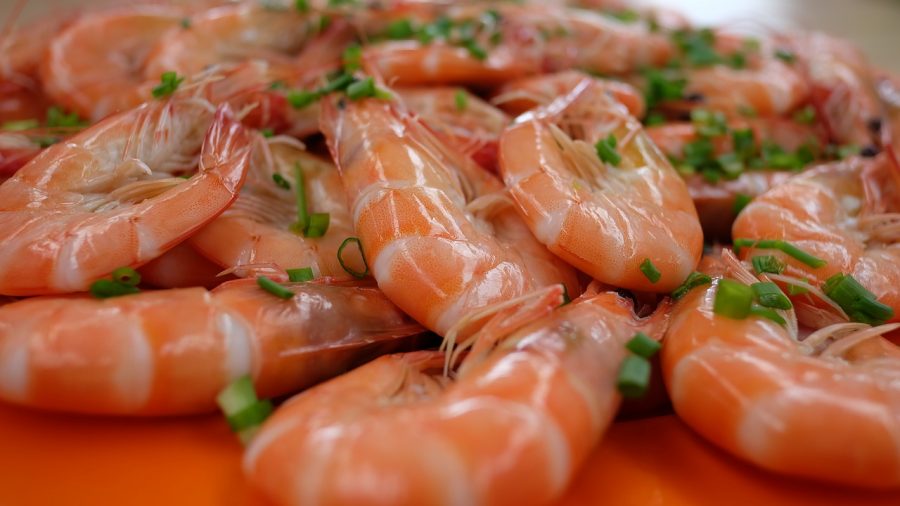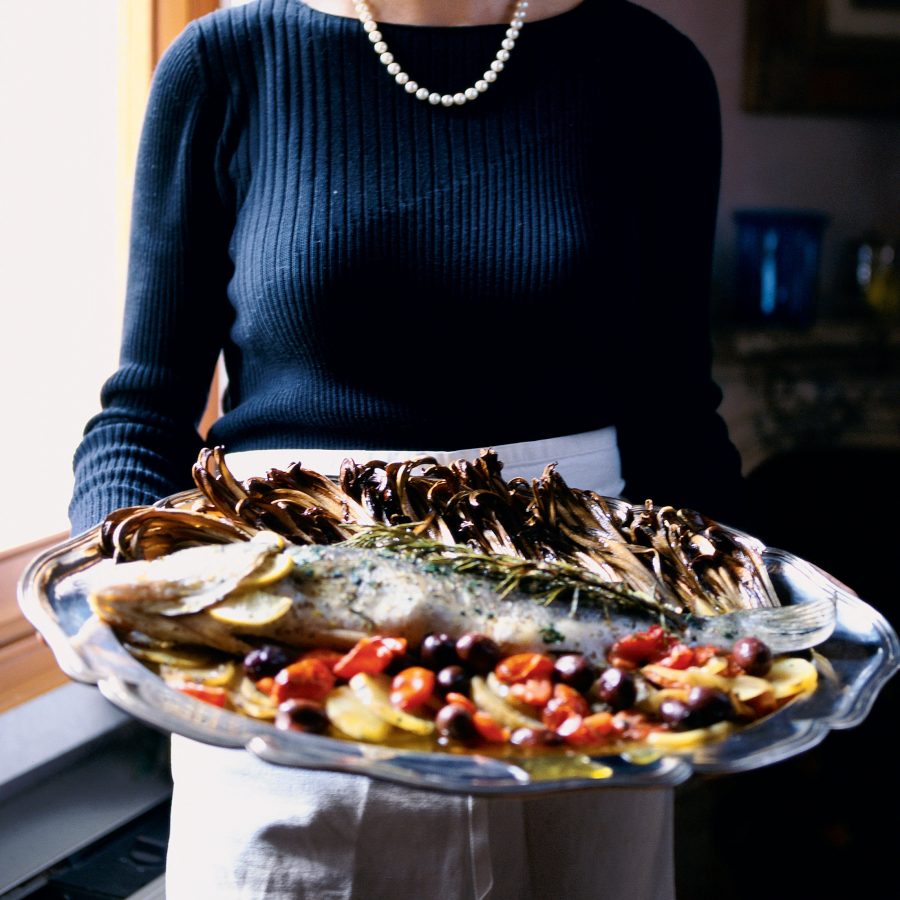This is a phenomenal dish invented by my friends at Sora Lella, one of the best and most traditional Roman restaurants on the Isola Tiberina in the center of Roma.
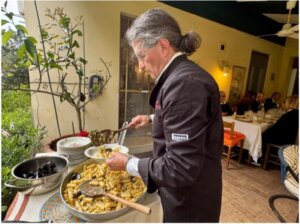
One of Sora Lella’s best recipes is the baccalà and mussel pasta.
Ingredients
- 500 grams of Rigatoni for 4 – 6 people
- 3 pounds of mussels (cozze 1.3 kg)
- ¾ pound de-salted baccalà (400 grams)
- ½ cup grated pecorino (the best aged Roman or Calabrian pecorino you can find). The amount of pecorino varies depending on how intense it is, for a very good one ½ cup (40 grams) is sufficient, for an average pecorino, one you need double that amount/
- 4 green scallions, finely sliced
- Zest of 2 lemons
- large clove of garlic, peeled and smashed
- 4 small sprigs of fresh thyme
- 3 tablespoons of fresh Italian parsley, chopped
- 1 cup of white wine
- 1 cup of extra virgin olive oil, separated
- 2 hot chopped red peppers (Calabrian preferred)
- Freshly ground black pepper
Preparation
- In a large pot, start boiling the water for the pasta.
- Clean the mussels.
- Cover the bottom of a large pot with enough olive oil to cover the bottom (about 1/8 inch of oil, or 3 mm). Heat to high, and when the oil is hot, add the peeled garlic cloves. As soon as the garlic takes on a gold color, remove it.
- Immediately add the mussels to the hot oil, and cover. Once the noise of the frying mussels changes, it means the mussels have opened, which usually takes about 2 to 3 minutes.
- Remove the cover, add 2 tablespoons of chopped fresh parsley, mix well and add one cup of white wine. Cover the pot again and remove it after 1 minute. Allow the alcohol to evaporate for 30 seconds. Immediately remove the pot from the heat—do not overcook the mussels!As long as the mussels are open, they are fine. Add black pepper, mix well. Remove mussels from the pot but reserve the liquid.
- Remove about 5 whole mussels in their shells and reserve them in a medium sized bowl. For the rest of the mussels, remove the mussel from the shell and chop each mussel into about 4 pieces.
- In a small pot, add 1/3 of a cup of olive oil and the scallions cut in thin slices and after a few minutes add some water, say ¼ of cup, cook on low heat for about 7-10 minutes., add ¼ of cup of white wine, bring the heat to high for 1 min to let alcohol evaporate. Turn heat off and add this to the larger pot containing the mussels sauce turn on fire to medium.
- Throw the pasta in the hot water.
- Cut the Baccalà in strips and put it in the pot with the mussel sauce. Add the minced hot pepper, the chopped mussels, half of the zested lemon peel, 1 teaspoon of parsley, and the thyme. Let it cook on medium for 3 minutes. Turn the heat off. Let it rest.
- Cook the pasta. When the pasta is very al dente, say 2 minutes less the indicated cooking time on the box, drain it, reserving some of the water. Add the al dente pasta to the pot containing the Baccalà/mussel sauce. Bring up the heat to high and cook the combined sauce and pasta for about 3 to 5 minutes, gently mixing the pasta and sauce together to allow some of the sauce to absorb into the pasta.If the sauce seems too thick, you can add some of the reserved pasta water, but it should not be necessary.
- Take the pot from the hot burner, add the grated pecorino, the remaining lemon zest, and a couple of tablespoons of extra virgin olive oil.
- Put into the pasta bowls, decorating each plate with the 5 mussels reserved in Step 6.
- And now, as my friends at Sora Lella would say, enjoy this “poetry”!

